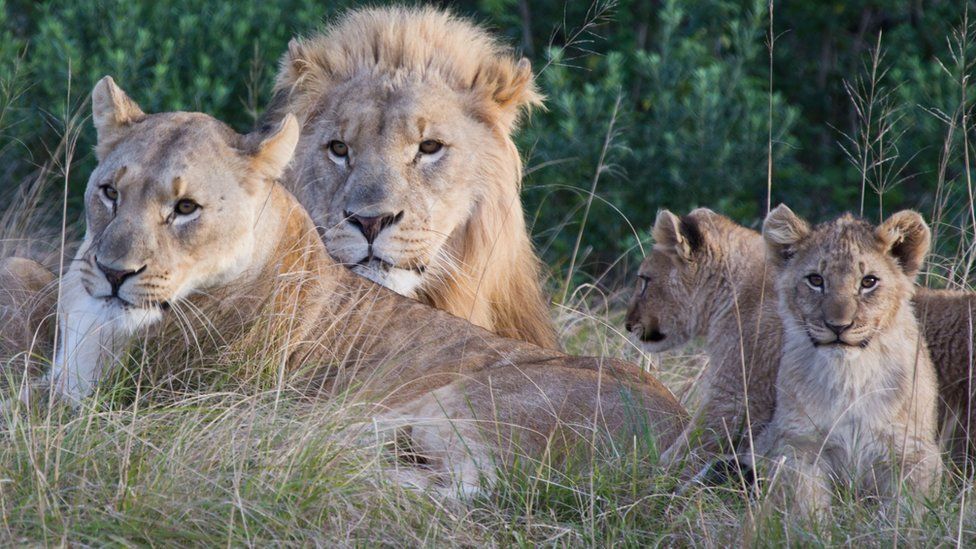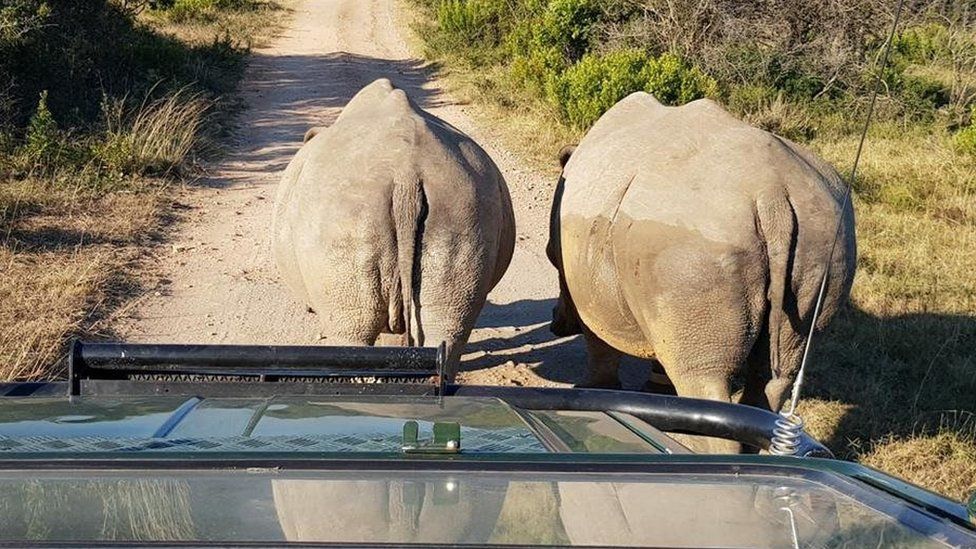The bleeding skull and limbs of at least two poachers who broke in to hunt rhinos were discovered by staff at a South African reserve.
Poachers drawn to the Sibuya Game Reserve’s wide variety of animals, particularly its rhinos, have committed multiple intrusions there over the past several years. The reserve is located in southeast South Africa, close to the town of Kenton-on-Sea.
The corpses of two, probably three, alleged rhino poachers who were mauled to death and devoured by the neighborhood lions in what some are calling an act of nature’s karma were found by rangers in a lion cage inside the reserve.
Owner of the park Nick Fox said that there were so few of the poacher’s corpses left that it was impossible for authorities to determine how many individuals were actually killed.
The only parts of the corpse that were still there were one skull and a little portion of the pelvis, according to Fox.
However, given that most rhino poaching gangs consist of three individuals and that three pairs of shoes and gloves were discovered nearby, game reserve personnel believe that we are talking about three males.

Sibuya, a 30-square-mile reserve in the Eastern Cape region of South Africa, is home to all five species of the “Big 5” (lions, rhinoceroses, elephants, buffaloes, and leopards).
The reserve’s anti-poaching canines alerted staff to a problem about 4:30 a.m. on July 2, according to Fox. The dog handler then heard a commotion coming from the lions but chose not to investigate because it was how the lions often acted in the morning.
One of the reserve’s rangers didn’t discover the bloody corpses of the poachers until much later. A high-powered rifle with a silencer, an ax, and wire cutters were among the equipment that the police and Sibuya staff discovered when they got on the site. According to Fox, this is a “surefire indicator of rhino poachers.”
A helicopter search team was unable to locate any survivors. The precise number of individuals devoured is another question the police are investigating.
According to Fox, “we recovered enough body pieces and three pairs of empty shoes to imply that the lions ate at least three of them, but it is dense bush and there might be more.”

Due to the rising demand for rhino horn in some regions of Asia, there has been an increase in poaching in Africa in recent years. 1,028 rhinos were poached in South Africa in 2017, according to the Department of Environmental Affairs of South Africa.
Despite being made of the same substance as human fingernails, rhino horns are in high demand in Southeast Asia, notably Vietnam, due to the mistaken belief that they have potent medical capabilities. In certain regions, rhino horns may sell for up to $100,000 per kilogram (a little over two pounds), providing poachers with a substantial incentive.
While the occurrence was unfortunate, Fox felt it should serve as a warning to other poachers who put themselves in danger by illegally shooting wildlife on his reserve. He stated of the poachers, “The lions are our watches and protectors and they selected the wrong pride and became a meal.”
Around 29,000 rhinos are still alive today, and South Africa is where most of them are found.